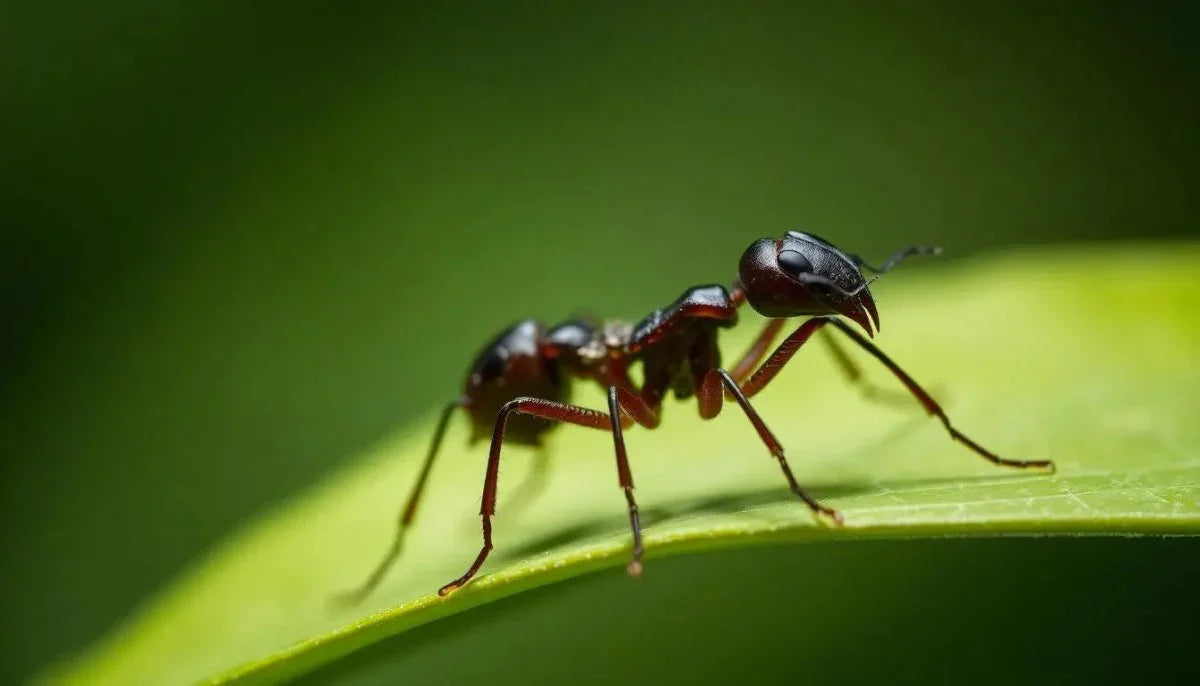Have you ever wondered how many legs ants have? As one of the most abundant and diverse creatures on our planet, ants are truly fascinating creatures to observe and learn about. In this blog post, we'll dive deep into the anatomy of ants, focusing specifically on their legs and exploring the fascinating world of these tiny, yet mighty, insects.
The Anatomy of an Ant's Legs
Ants belong to the order Hymenoptera, which includes bees, wasps, and other similar insects. Like all insects, ants have a segmented body and six legs. Each of an ant's legs is composed of several distinct parts, including the coxa, trochanter, femur, tibia, and tarsus.
The coxa is the part of the leg that attaches to the ant's body, while the trochanter is a small segment that connects the coxa to the femur. The femur is the largest and strongest part of the leg, providing the power for the ant's movements. The tibia is the segment that connects the femur to the tarsus, which is the foot of the ant.
Interestingly, the number of segments in an ant's tarsus can vary depending on the species. Most ants have five tarsal segments, but some species may have as few as one or as many as six.
The Diversity of Ant Legs
While all ants have six legs, the specific structure and function of those legs can vary greatly depending on the species and the role of the individual ant within the colony.
For example, some ants have specialized legs for digging, such as the trap-jaw ant, which has powerful, claw-like mandibles that it uses to capture prey. Other ants, like the leaf-cutter ant, have legs that are adapted for carrying large loads of leaves and other plant material back to the colony.
In addition to their functional differences, ant legs can also vary in size and shape. Some species of ants have relatively long, slender legs, while others have shorter, stockier legs. The size and shape of an ant's legs can be an important factor in its ability to navigate its environment and perform its various tasks within the colony.
The Importance of Ant Legs
Ants' legs are not just for walking – they play a crucial role in the overall functioning and survival of the colony. Here are some of the key ways that ant legs contribute to the success of these remarkable insects:
Locomotion
Perhaps the most obvious function of an ant's legs is to allow it to move around its environment. Ants use their legs to walk, run, and even climb, allowing them to explore their surroundings, search for food, and defend their colony.
Carrying and Lifting
Many species of ants are known for their impressive strength and ability to carry and lift objects that are much larger than themselves. This is made possible by the powerful muscles and joints in their legs, which allow them to lift and transport heavy loads.
Digging and Burrowing
Some ants, such as the fire ant and the leafcutter ant, are skilled diggers and burrowers. They use their strong, specialized legs to excavate elaborate underground nests and tunnels, which provide shelter and protection for the colony.
Defense and Attack
Ants' legs can also be used for defense and attack. Some species, such as the trap-jaw ant, have powerful, claw-like legs that they use to capture and subdue prey. Other ants may use their legs to kick or push away potential predators or competitors.
Sensory Perception
Interestingly, ants' legs also play a role in their sensory perception. Many species of ants have specialized sensory structures on their legs that allow them to detect chemical signals, vibrations, and other environmental cues that are important for their survival and navigation.
Conclusion
In conclusion, ants' legs are truly remarkable structures that play a vital role in the lives of these fascinating insects. Whether they are used for locomotion, carrying, digging, defense, or sensory perception, ants' legs are a testament to the incredible diversity and adaptability of the natural world.
So, the next time you see an ant scurrying across the ground, take a moment to appreciate the incredible complexity and functionality of its legs. Who knows what other secrets the world of ant anatomy might hold?


